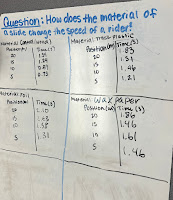Week 13 Blog
Lab Jigsaw Activity- Iowa Natural Heritage Foundation:
This foundation is a non-profit organization that is prioritizing protecting and restoring Iowa's land, water, and wildlife. This organization was founded in 1979, and wanted to ensure that things like woodlands, prairies, wetlands, and wildlife were not lost but instead protected. To protect things like this, this organization relies on volunteers, donations, and partners to help protect Iowa's natural places. Volunteers were known to donate their time to help keep prairies, trails, and rivers in good condition. The donations helped bring in more resources to have good help on sites across Iowa and things we are trying to protect. This foundation prioritizes many different things. The first is looking at Land, Water, and Wildlife Protection. Another thing this foundation looks at and considers is creating multi-e trails. Multi-use trails are paths or routes designed to accommodate a variety of recreational activities and users, leading to more safety and opportunities. The foundation also utilizes Land Stewardship to engage the community in land restoration and management efforts. This is through volunteer opportunities, where there have been over 20,000 hours.
Precipitation: (snowfall, rain?) How is precipitation changing in Iowa, and what animals in Iowa will be impacted?
The precipitation patterns over time have changed drastically, and one of the key factors in this was due to climate change. As the planet warms, the water cycle intensifies, leading to more evaporation and more precipitation in some areas while causing others to become drier and experience things like droughts. The specific precipitation patterns that are changing are just an increase in annual precipitation, especially in the spring, consisting of more rainfall events. This change in rainfall and precipitation patterns has left things harder on animals due to their change of habitats, increased flood risks, and also bad and traumatizing drought conditions. The increased rainfall could lead to a change in habitats due to flooding of animal habitats, like destroying nests, and animals living in low-lying areas. It could affect aquatic and wetland species. Comes around a lot in spring. Lower summer rainfall. Summer precipitation will become drier due to the variability in summer. Heavy precipitation events have increased 40% over time. The amount of precipitation falling has increased significantly in the Midwest by 42% from 1958 to 2016. These numbers are projected to increase by another 40% in the next 40 years.
Our big statement: The existence of climate change is supported by increasing average temperature (extreme heat) and drastic changes in precipitation, and elongated growing seasons.
Causes:
- Higher risk of flooding in wet seasons.
- Need for irrigation systems in dry seasons.
- The goldfinch population is leaving.
- Livestock at risk of death, and the product quality diminishes.
- Poor soil quality, crop loss, etc.
- IEP vs no IEP?
- Why do some regions have a hot climate and others have a cold climate? elevation changes, how close to the body of water, latitude, ocean currents(which affect the temperature of air that passes over it), wind, air masses, and relief.
- Latitude: distance from the equator is a key factor in determining whether a climate is hot or cold. Places closer to north and south poles consist of colder temperatures. places near the equator have warmer temperatures.
- Air mass: a large volume of air that takes on the climatic conditions of the area where it is formed.
- Relief: Precipitation is created when an air mass rises to cross a mountain barrier.
- Near Water: In the summer, the water acts like an air conditioner to keep the air temperatures cool. in the winter, the water acts like a heater to keep the temperatures from getting too cold.
- Climate Change- sea ice: The sea ice amount has drastically moved and changed over time. From 1979 to 2022, the sea ice has drastically decreased over time. People all over the world in cold areas had to drastically change their way of living!
- How does climate change affect the sea level?
- Earth's atmosphere consists of different layers of gases, and more specifically is nitrogen and oxygen, which are located between Earth's surface and space. The atmosphere is relatively thin, only 60 miles long!
- Greenhouse Gases: complex molecules made of three or more atoms bonded together.
- The Greenhouse Effect: key descriptions of how greenhouse gases in the Earth's atmosphere trap heat (some radiation reflected back into space by the atmosphere and surfaces with high albedo, like ice, and others is absorbed by greenhouse gases and surfaces with low albedo, applying near land and water)
- Albedo Effect: the amount of energy reflected by a surface.



Comments
Post a Comment